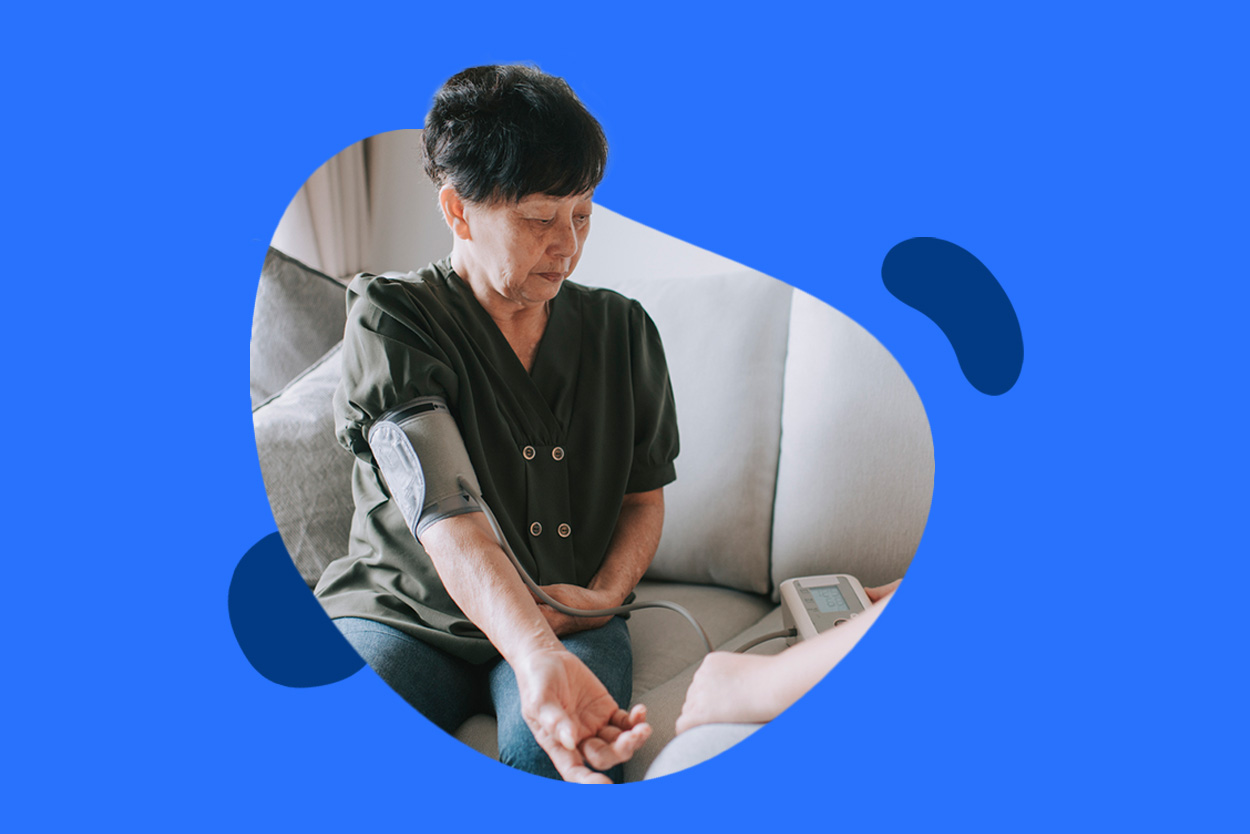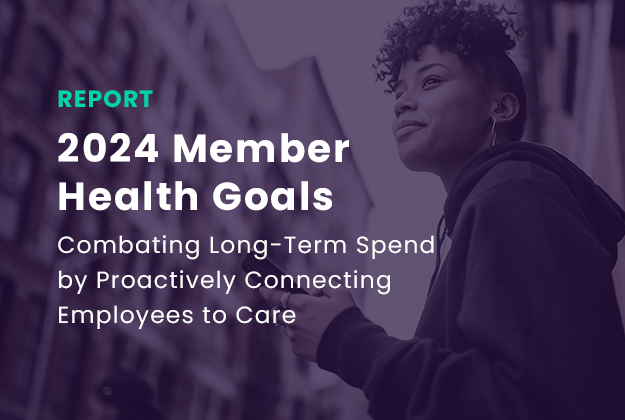Why Drug Costs Are Rising, and What to Do About It
Drug costs are out of control, and one culprit has recently been placed in the hot seat: prescription drugs. Yearly price hikes for prescription...
Connected Navigation Platform
Guiding to high-value care
Behavioral Health
Foster a mentally healthy workplace
EAP
Supporting holistic wellbeing
Virtual MSK Care
Reimagining musculoskeletal care
Virtual Primary Care
Powered by smart navigation
Surgery Centers of Excellence
Best-in-class surgical outcomes
Virtual Urgent Care
Immediate care, any hour of the day
Chronic Care
A new approach to chronic care
Integrations
Flexible to any strategy

We recently hosted our first-ever expert panel to go in-depth on the meteoric rise in popularity of GLP-1 agonist medications being used as weight-loss drugs.
89% of healthcare professionals surveyed said they’ve seen “a recent increase in patients requesting weight-loss medications” and 92% of primary care physicians said they’d prescribed the drugs on an active basis. As their popularity increases, prices for these popular monthly drugs may add up fast for both employees and their employers if they don’t have a plan in place to address prescription costs.
Listen to the podcast episode featuring our panelists or read the summary below as they go in-depth on weight-loss drugs, and what it means for patient outcomes and employer costs.
According to Vinay Patel, the classification is quite loose. “So, I mean, the funny thing is a weight loss drug could be any drug that induces weight loss," said Patel. “It could be a drug that's used for something completely different.”
This is exactly what we’ve seen in general with the rise of GLP-1 medications, like Ozempic. The FDA first approved Ozempic for type 2 diabetes in 2017, primarily to improve blood sugar control, but there wasn’t a surge in popularity for weight loss until years later.
From 2020 to 2022, the number of prescriptions for these drugs quadrupled.
“It came from their success,” said Brian Lahmann, MD. “You know? Ozempic was a very good diabetes drug. It did have an impact on patients' sugar on their A1C. They got healthier, but there was this side effect that they were also losing weight. Initially, they thought diabetics were losing weight just because they were doing all this healthy stuff to better manage their diabetes. They're exercising, watching what they eat, etc.
But it turned out, a lot of it was just a side effect of the medication. It slowed down gastric emptying. It helped patients to feel full with less food. They had less food noise, less cravings in between meals and they started losing a significant amount of weight. And it was three to four times the amount we'd seen with the classic oral medications.”
Dr. Lahmann says that this got the attention of the drug companies, and they started rapidly developing more variations of these drugs.
With more money being pumped into these treatments, Vinay Patel has simultaneously seen a boost in effectiveness and a decrease in side effects, making them more attractive to patients looking to lose weight. “What we've seen historically - before this new class of drugs - is anywhere from two to maybe five percent weight loss, and they had some pretty severe side effects,” said Patel. “So they weren't as popular as the new class of drugs that we have today.”
Dr. Katherine Saunders of Cornell Medicine confirmed Patel’s findings. “When I started training over a decade ago, the most effective anti-obesity medications were associated with 5-10% percent total body weight loss,” said Saunders. “But the medications that have come out over the last few years are considerably more effective, at 15% and now upwards of 22%.”
This level of effectiveness has created what some have called a breakthrough treatment for obesity. These results could significantly reduce risk factors for cardiac events and improve the length and quality of life in obese patients.
“You know, we're seeing [employers in high-margin industries being more willing to absorb the cost] of these weight loss drugs,” said Sean Dauber. ”They're fairly cash flush and are typically looking at this as an opportunity to make sure they offer great benefits for their employees. So those same employers are like, look, ‘we have no problem offering rich fertility and bariatric benefits -just add the weight loss drugs. We’re fine with it.”
“On the flip side, I think there are employers who have to be more conscious about their spend — or have had really high-cost spend on their medical plans already. They are very tentative to move forward without some significant restrictions
To me, the real challenge for employers at this stage is do we offer or do we not?”
Another consideration for employers is the effect it will have on the larger economy. According to Goldman Sachs, "effects are likely to be larger in the U.S. than in other countries, as health outcomes in other developed markets are generally better.” Currently, 40% of the U.S. population meets the medical definition of obesity.
"If GLP-1 usage ultimately increases [significantly] and results in lower obesity rates, we see scope for significant spillovers to the broader economy," Goldman economists said in a note.
List prices for these popular monthly drugs may add up fast for both employees and their employers.
“A Wall Street Journal article came out about a study in North Carolina analyzing a population of 800,000 employees,” said Sean Dauber. “The article cited that in the summer of 2021, they had 2,800 people who were prescribed or used weight-loss drugs. At the end of 2023, it was 25,000.”
“They didn't have a lot of cost control in place, and they all made an exclusion on their plan, but it's $100 million they spent on the drug for 25,000 people.
So I think that's why you look at Ascension, you look at Mayo putting this lifetime cap of $20,000 on it. It's really designed to kick start [the weight-loss process], get going on it, but you have to have behavior modification [from employees] because you can't be on these drugs for life.”
Morgan Stanley Research analysts estimate that around 7% of the U.S. population will be using GLP-1 drugs by 2035.
Furthermore, Goldman Sach predicts that the use of GLP-1s could increase by anywhere between 10 to 70 million consumers by 2028. Potentially boosting U.S. GDP by a full percent if there are 60 million users in coming years.
While that number may sound high, another consideration to keep in mind is the potential for increased GLP-1 affordability in the coming years. Some notable politicians are already taking public aim at the manufacturers of these drugs, asking for the U.S. price to match Canadian prices ($200-$300 monthly on average). In the U.S., Ozempic currently costs $935.77 on average before insurance and other rebates, “yet it can be manufactured for between $0.89 to $4.73 a month,” according to research from Yale University.
And for as much as new solutions and treatments are emerging, Natalie Donnelly says that proven techniques — like being connected with a primary care provider — are still as effective as ever.
“[It’s key to] get connected with a primary care doctor, someone that is going to be overseeing your long-term care instead of the convenience of popping to an urgent care if an issue comes up,” said Donnelly. “That kind of non-continuation of care [we’re seeing] for younger generations — when it comes to the percentage of us connecting with primary care providers, we are bombing.”
Data backs up this sentiment as well.
Percentage of consumer who say they have a primary care physician (PCP)
“And so I would encourage everyone — even if you're Gen Z or Millennial and feeling good and healthy — you need to have a primary care doctor that you're seeing at least annually. That way conditions can either be identified before they become something that is chronic, or you can work with a trusted advisor and your care team to have them managed properly.”
With prices continuing to skyrocket, it’s as important as ever to use a wide variety of tactics to cut down on prescription costs. HealthJoy’s Rx Savings program uses a combination of prescription assistance, generic alternatives, third-party savings programs and much more to help shrink costs.
The HealthJoy Rx Team has responded to the uptick in requests for GLP-1 drugs and subsequently helped members save up to thousands of dollars per year on these potentially life-changing medications!
Across HealthJoy’s most requested weight-loss drugs, we’re helping employees save one-fourth to one-third of the monthly prescription costs.

In case you missed it, HealthJoy has officially entered the world of podcasting with the launch of our original podcast, Bonding Over Benefits!
Each episode, HealthJoy’s Libby Platt invites benefit industry experts to share insights, experiences and innovative solutions to improve the benefits and healthcare experience. Beyond shining light on the most pressing and interesting topics in benefits, we hope to keep it lighthearted and bond with our guests along the way!

Drug costs are out of control, and one culprit has recently been placed in the hot seat: prescription drugs. Yearly price hikes for prescription...

By 2030, an estimated 83 million people in the US will have three or more chronic conditions — compared to 31 million in 2015. That means nearly a...

The second annual Member Health Goals report harnesses the power of data to help discover the differences between the type of benefits employees...